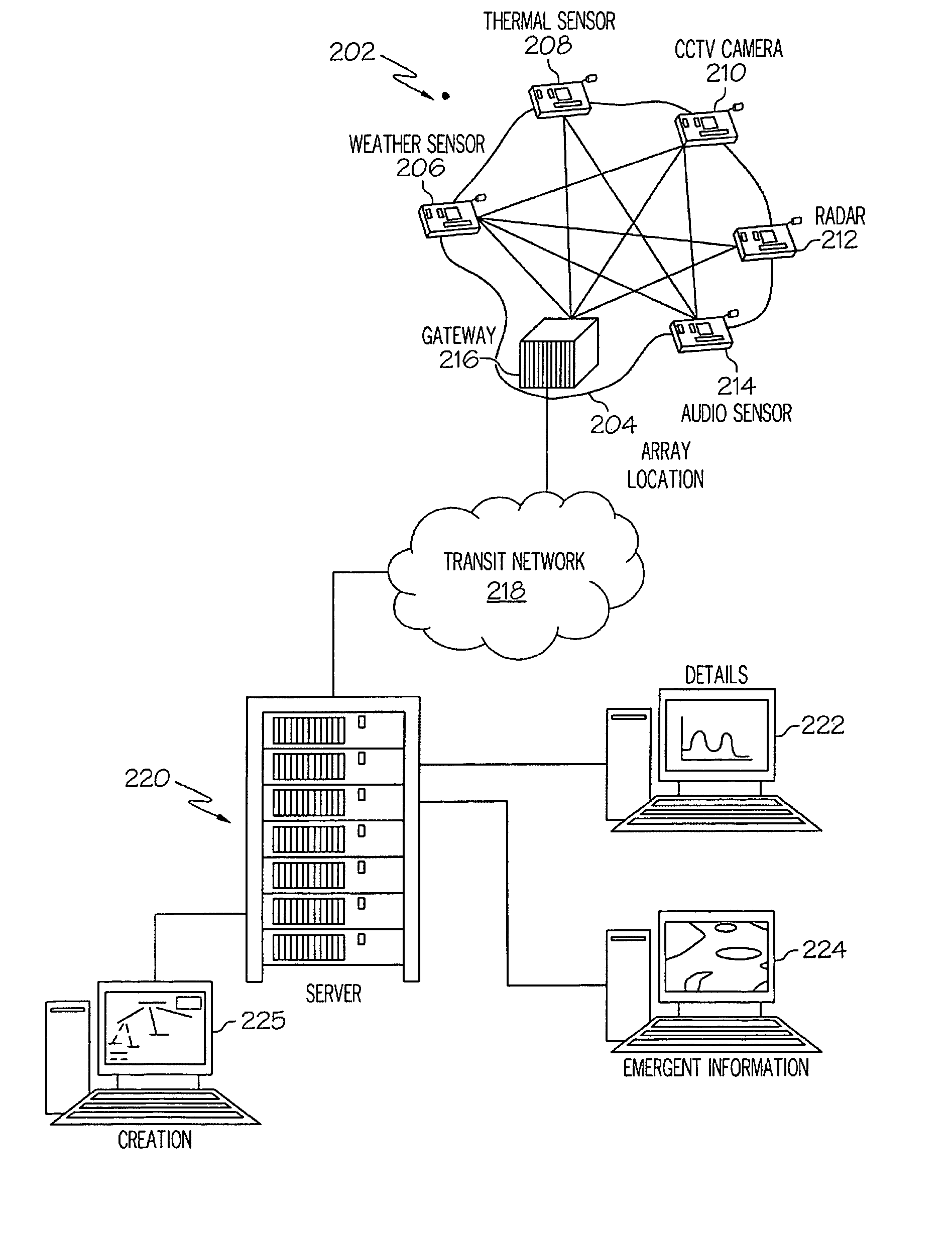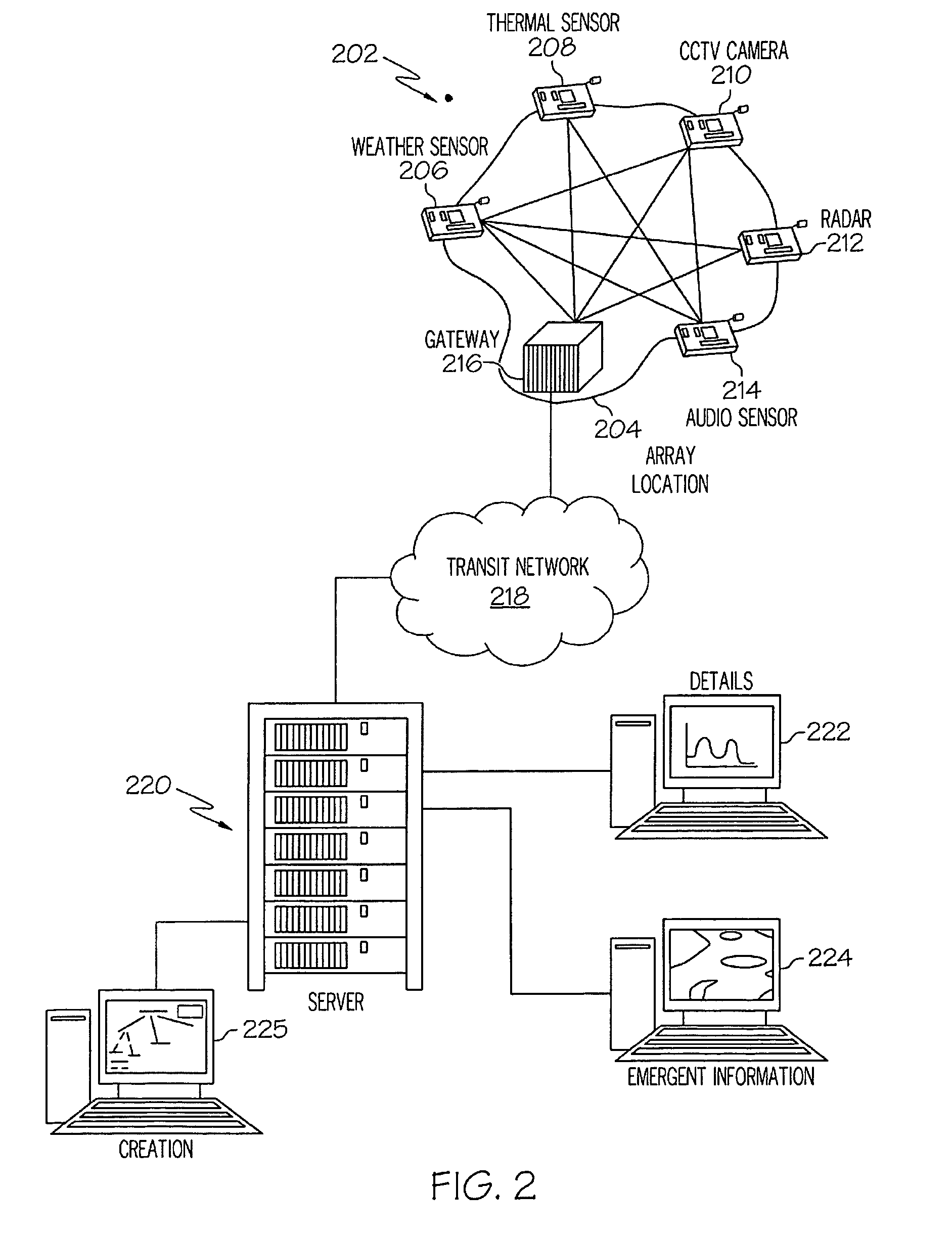Pattern-driven communication architecture
a communication architecture and pattern technology, applied in the field of detection networks, can solve the problems of not enabling the controller to recognize emergent patterns, most of the data collected by the sensors and other detection processes, and collecting data in a non-intelligent manner,
- Summary
- Abstract
- Description
- Claims
- Application Information
AI Technical Summary
Problems solved by technology
Method used
Image
Examples
Embodiment Construction
[0022]Presently presented is a hardware, software and process system for managing emergent information patterns from a sensor network through the use of graphical user-created patterns.
[0023]As described in detail below, a field of smart sensors, as used in the present invention, is interactive. A controlling software, which describes a set of search patterns for the field of sensors, is pre-programmed or downloaded to the field of sensors. Each sensor “votes” as to whether it has detected an external stimulus that fits in any of the search patterns stored within the sensor. As the “vote” tally reaches a high enough percentage of “opt-ins,” against a time line per pattern, the sensor field takes turns trying to get the results of the vote and its supporting details, already constantly shared amongst the sensors (e.g., by using a ZIGBEE™-type network—ZIGBEE is a registered trademark of the ZigBee Alliance in the United States and other countries), out via various telecommunications c...
PUM
 Login to View More
Login to View More Abstract
Description
Claims
Application Information
 Login to View More
Login to View More - R&D
- Intellectual Property
- Life Sciences
- Materials
- Tech Scout
- Unparalleled Data Quality
- Higher Quality Content
- 60% Fewer Hallucinations
Browse by: Latest US Patents, China's latest patents, Technical Efficacy Thesaurus, Application Domain, Technology Topic, Popular Technical Reports.
© 2025 PatSnap. All rights reserved.Legal|Privacy policy|Modern Slavery Act Transparency Statement|Sitemap|About US| Contact US: help@patsnap.com



